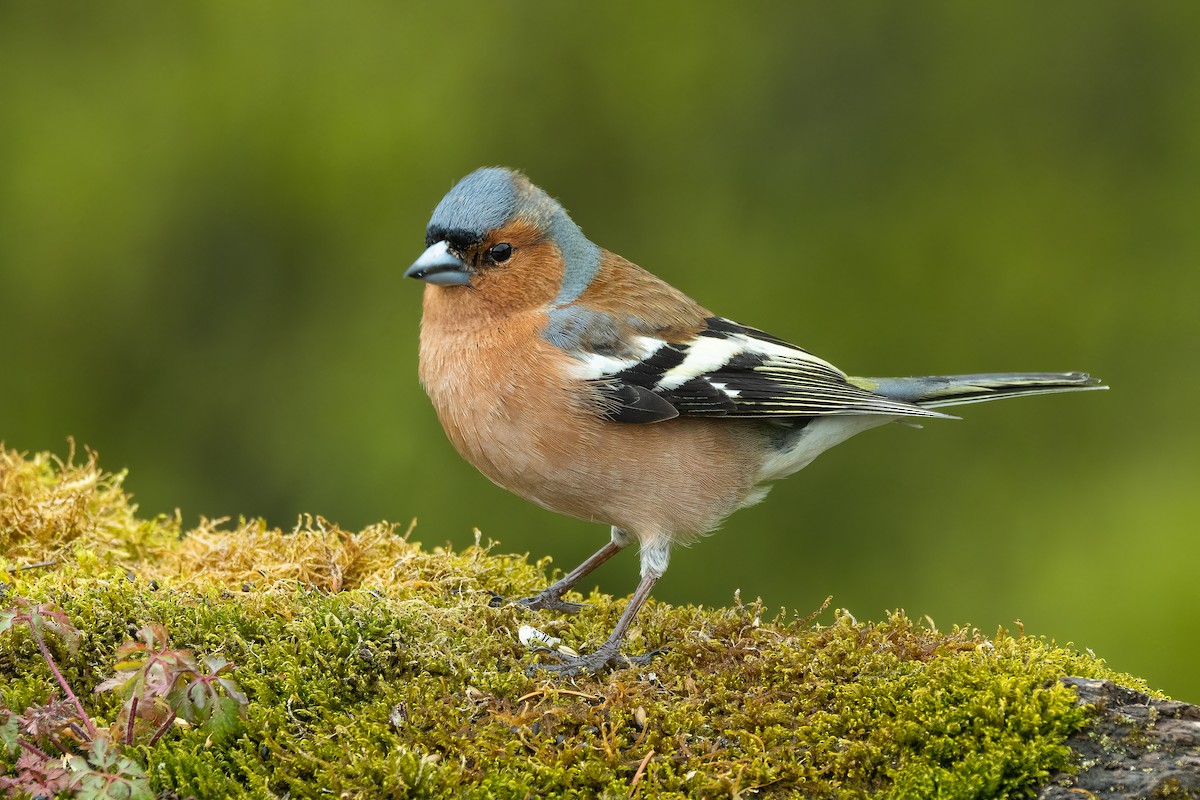Family: Fringillidae
Genus: Fringilla
Common in varied wooded and forested habitats, parks, gardens, farmland with hedges and scattered trees. Forms flocks in winter; often visits garden feeders. Handsome, brightly colored male is distinctive, with bluish cowl, pink face and breast, black-and-white wing pattern (colors muted in winter). Female much drabber but shares male pattern; especially note the complex wing pattern. Both sexes have white outer tail feathers, often striking in flight such as when flushed. Listen to them sing Eurasian chaffinch.
Photo: Look how gorgeous [myshortcode]
Description [myshortcode]

In Europe, the common chaffinch can be found as far north as the Arctic Circle and as far south as the Mediterranean region, while in Asia, its range extends from the Middle East to Siberia. In North Africa, the species is typically found in the Atlas Mountains and other wooded areas.
The common chaffinch is known for its vibrant and distinctive plumage, with the male exhibiting a pink-tinged breast and cheeks, along with a slate-blue crown and nape, while the female is generally more subdued in coloration, featuring a brownish-gray plumage. Both sexes display a characteristic white wing-bar and white outer tail-feathers, making them easily recognizable in flight.
In terms of behavior, the common chaffinch is primarily a seed-eater, feasting on a variety of seeds, nuts, and grains. The species is also known to consume insects and other small invertebrates, particularly during the breeding season when protein-rich food is essential for raising young chicks.
Breeding occurs in the spring and summer months, with the female constructing a cup-shaped nest made of grass, moss, and lichen, typically situated in a tree or shrub. The female will then lay a clutch of eggs, which she will incubate for approximately two weeks before the chicks hatch. Both parents participate in feeding and caring for the young, which fledge after about two weeks.
The common chaffinch is also recognized for its melodious song, which consists of a rapid series of musical notes, often delivered from a high perch. This vocalization plays a crucial role in courtship and territorial defense, with males competing to produce the most elaborate and impressive songs.
Overall, the common chaffinch is a widespread and familiar bird across its range, known for its colorful plumage, seed-eating diet, and delightful song, making it a cherished species in the avian community.




